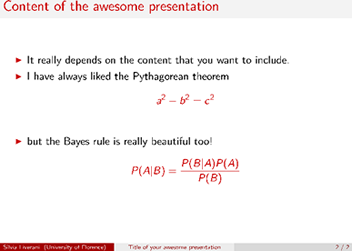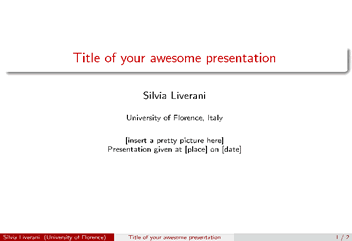R Package CARME
The R package CARME (CAR-MM Modelling in Stan) is a package for conditional autoregressive multiple membership modelling using Stan.
The main references for CARME are the following papers:
- Gramatica, M., Liverani, S. and Congdon, P. (2023) Structure induced by a multiple membership transformation on the Conditional Autoregressive model. Submitted. Link
- Gramatica M., Congdon P., Liverani S. (2021) Bayesian modelling for spatially misaligned health areal data: a multiple membership approach. Journal of the Royal Statistical Society Series C, 70: 645-666. Link
Additional information on CARME and code is available here.
R Package PReMiuM
The R package PReMiuM (Profile Regression Mixture Models) is a package for Dirichlet process Bayesian clustering, also known as profile regression.
The main reference for PReMiuM is the following paper.
- Liverani, S. ∗ , Hastie, D. I. ∗ , Azizi, L., Papathomas, M. and Richardson, S. (2015)
PReMiuM: An R package for Profile Regression Mixture Models using Dirichlet Processes.
Journal of Statistical Software, 64(7), 1-30. Link.
This paper discusses how to deal with convergence issues.
- Hastie, D. I. ∗ , Liverani, S. ∗ and Richardson, S. (2014)
Sampling from Dirichlet process mixture models with unknown concentration parameter: Mixing issues in large data implementations.
Statistics and Computing 25 (5), 1023-1037. Link
All the versions of PReMiuM (including the most up to date ones) can be downloaded here.
My beamer theme: Florence
Below you can download the beamer theme that I have created and currently use for my LaTeX presentations. Keeping with the beamer theme tradition of city names, I have called my own theme Florence!
To use this theme you need to save beamerthemeFlorence.sty and beamercolorthemebeaver2.sty in the same folder of the tex files that you are using for the LaTeX presentation. At the top of your main tex file you need to type
\documentclass{beamer}
\usetheme{Florence}
and then just compile as usual. The output looks like in the two slides below (low resolution!) and here is the code used to create them: talk.tex.

